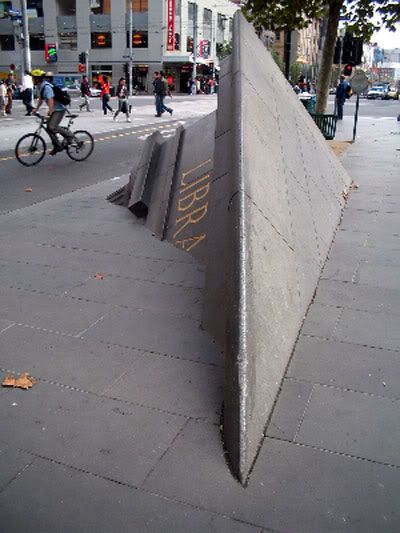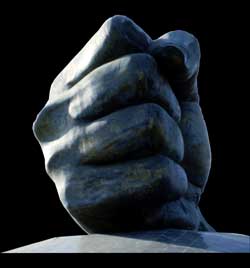What do you see?
Start with this:
And then click on the picture or this link. Either works.
From the latter—and quoted at the former:
I admit the building appears to be something of an architectural feat, but whether or not it's a triumph is a separate question that I cannot, at this time, answer. Still, though, I find it hilarious that "knowledge window" and "hemorrhoids" are homophonic in Chinese. How the hell does that work?
Oh, right. That's linguistics. Anyway, you want a corner office? Or maybe something in the lower floors? Or, maybe, how about a different building altogether? I have a mild fear of heights, even when I'm caged in and can't fall off the edge. Still, I think I'd probably find working in the connecting section somewhat unnerving.
____________________
Notes:
Chow, Elaine. "China's CCTV Headquarters Trying to Shake 'Hemorrhoids' Nickname". Gizmodo. December 3, 2008. http://www.gizmodo.com.au/2008/12/c...s_trying_to_shake_hemorrhoids_nickname-2.html
See Also:
Mudede, Charles. "The Building of Hemorrhoids". Slog. December 4, 2008. http://slog.thestranger.com/slog/archives/2008/12/04/the_building_of_hemorrhoids
Start with this:
And then click on the picture or this link. Either works.
From the latter—and quoted at the former:
The China Central Television headquarters is a 6.45 million square foot complex that involves twin leaning towers connected by two massive sections in midair. Designed by Rem Koolhaas, it's an amazing feat of engineering and architecture. But when CCTV proposed that they call it Zhichuang (meaning Knowledge Window), Chinese netizens saw its homophone, "Hemorrhoids."
(Chow)
I admit the building appears to be something of an architectural feat, but whether or not it's a triumph is a separate question that I cannot, at this time, answer. Still, though, I find it hilarious that "knowledge window" and "hemorrhoids" are homophonic in Chinese. How the hell does that work?
Oh, right. That's linguistics. Anyway, you want a corner office? Or maybe something in the lower floors? Or, maybe, how about a different building altogether? I have a mild fear of heights, even when I'm caged in and can't fall off the edge. Still, I think I'd probably find working in the connecting section somewhat unnerving.
____________________
Notes:
Chow, Elaine. "China's CCTV Headquarters Trying to Shake 'Hemorrhoids' Nickname". Gizmodo. December 3, 2008. http://www.gizmodo.com.au/2008/12/c...s_trying_to_shake_hemorrhoids_nickname-2.html
See Also:
Mudede, Charles. "The Building of Hemorrhoids". Slog. December 4, 2008. http://slog.thestranger.com/slog/archives/2008/12/04/the_building_of_hemorrhoids













